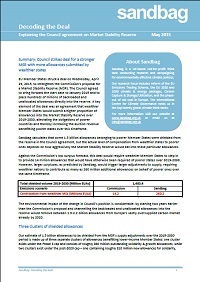Decoding the deal – Explaining the Council agreement on the Market Stability Reserve
ETS
The deal struck by the Council in Coreper agreed a January 2019 start to the market stability reserve and the placement of both unallocated allowances and backloaded allowances into the MSR.
In order to break the blocking minority on start date led by Poland, wealthier Member States had to agree to shield a volume of nearly 1.5 billion allowances that would benefit poorer ones. However, despite this substantial volume, the actual transfer of wealth between wealthier and poorer Member States could be as low as 14 million EUAs – although the actual figure may shoot up to 260 million EUAs depending on how the surplus actually develops.
In this briefing, Sandbag provides a step by step overview of what allowance clusters are shielded, how the redistribution effects operate, and how gains and losses are distributed across groups of Member States.
Press clippings: